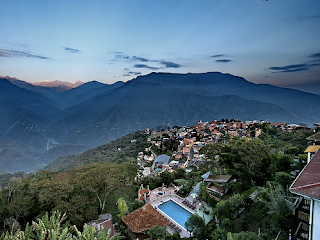Lima, the Fog and Herman Melville
(Moby Dick)
The
residents of Lima know that when the winter comes, the cold and the occasional
drizzle, the fog is added, which in addition to reducing daylight, creates an
atmosphere of sadness and mystery.
Alexander
Von Humboldt in his diary of 1803 recounts his experiences in the capital of
Peru. The details shown are not different from the current ones. Von Humboldt
writes:
"In
Europe we had been painted Lima as the city of luxury, elegance and beauty of
the beautiful sex ... I saw nothing of all that [...] At night, dirt from the
streets, adorned with dogs and donkeys burst, added to the irregularities of
the road, hinders the transit of cars [...] Lima is as far from Peru as it is
from London and while in other parts of America no one sins of excess of
patriotism, I do not know any other region that has so weak this feeling.
"
Herman
Melville, author of Moby Dick, who was between December and January 1844,
traveling as a sailor, could meet Lima and found the stage for some stories and
shows it as a strange and sad city.
-
"What makes Lima, the one without tears, the strangest and saddest city
you can see? This is because Lima has taken the white veil and there is the
highest horror in this whiteness, which defines her tribulation. "
"It is not only these things that make Lima, the one without tears, the
strangest and saddest city that can be seen."
Was Lima
really depressing and dirty? Humboldt did not invent facts, but did not take
into account that cities like London or New York, also suffered from the same
problems.
In 1800,
New York was a small city with 30,000 inhabitants, which doubled every 10
years. The large population with primitive infrastructure created ideal
conditions for the increase of epidemics of infectious diseases (cholera,
typhoid fever, typhus, yellow fever, malaria and other diseases transmitted by
mosquitoes and ticks). Horses were the creators of diseases; there were between
100,000 and 200,000; each horse left 24 pounds of manure and several liters of
urine per day. The working horses were poorly cared for, they lived in large "horse
garages"; The large barns existed next to these horse garages, attracting
rats and other rodents. The city of New York in the 19th century was built for
humans and their animals. Horses, pigs, sheep and cattle were part of the daily
life of the city.
Despite
the presence of animals, there were no systematic efforts to clean streets. The
manure accumulated in winter was filtered to the ground floor during storms or
melting snow. When the horses died, their corpse could be in the streets until
they disintegrated. The children played with dead horses thrown in the streets.
If von Humboldt had been in New York during the winter, before coming to Lima,
he would not have expressed himself so contemptuously.
Melville
was in Lima in the summer, where it is expected that the sky is clear, there is
heat and light; but occasionally atmospheric events play a dirty trick and
everything turns gray, cold and dark for several days. Melville arrived in
these sad days, that's why his negative impression.
For the
Meteorology Service, the presence of large masses of clouds in the sky, cold
air, are due to two factors: The decrease in sea temperature, especially in the
central coast (Lima and Ica); the rains in the high parts of Lima that driven
by the winds arrive in Lima. Rain, fog, blocking the sun's rays and a strong
feeling of cold that are more intense in the morning depressed anyone. The very
high percentage of humidity, 96%, also influences the time.
The
Humboldt Current that comes from the south moves off the coast of Peru,
influences the climate of the area; by cooling the layers of air that are in
contact with it, saturates the atmosphere and creates the mists that are pushed
by the winds to the coast.
References
Portrait of an unhealthy city: New Yyork in
the 1800s, Columbia University – by David Rosner
Verano nublado en Lima: ¿Qué puede
ocasionar este extraño fenómeno climático?, 23 Enero, 2014










































